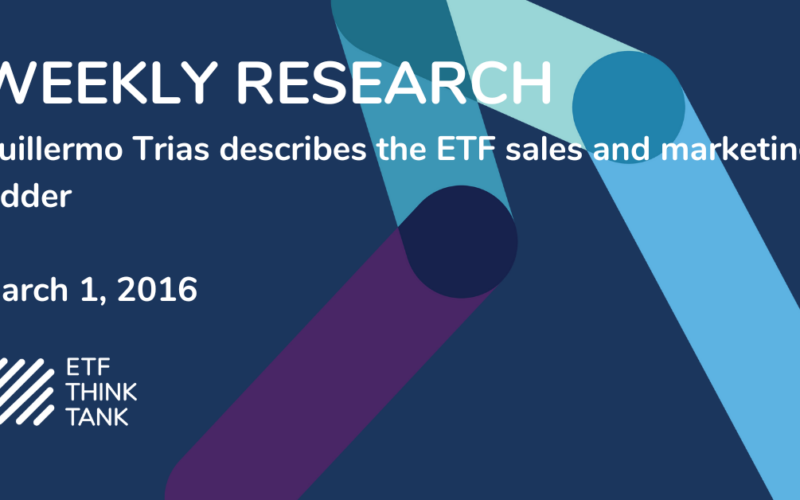Markets Are Scaring Themselves
“You have probably noticed that U.S. stock prices have fared poorly of late—and the S&P 500 closed on Wednesday at 1859, down almost 13% from its July 2015 high. You have probably also noticed that the biggest daily drops seem to occur either on bad news from China or when oil prices slide further.”
This is the opening paragraph of a Commentary by Alan S. Blinder in the Wall Street Journal on January 21, 2016. He goes on to identify significant facts to support his thesis and closes with this paragraph.
“In sum, the traders who make stock market prices seem to have a few things wrong: China is not as big a deal to us as they think; and falling oil prices should help, not hurt, U.S. growth. Don’t misinterpret any of this as investment advice, however. The market can stay irrational longer than you can stay solvent.”
I have been contemplating writing a market commentary for the past three weeks. My procrastination stems from a desire to provide relevant advice, as opposed to the loud fear mongering portrayed so often in the financial news media. The Wall Street Journal excerpt above, an opinion piece, caught my attention because of its contrary point of view and the importance of context. I am citing this as an example, not an endorsement of Mr. Blinder’s opinion.
Recent market volatility has changed the perception of the economic environment and suddenly everyone is concerned. Discussing the current investing malaise requires context. Unfortunately, context does not feel relevant to the immediate questions on everyone’s mind.
Here is the basic Q&A I have been engaged in many times during my investing career:
Q: “What just happened to the market?” A: “It went down a lot in a short period.”
Q: “Why?”
A: I provide 15 minutes of context and Q’s eyes glaze over
Q: “All I really want to know; – is the market done going down?”
A: After 15 more minutes of context I conclude with – “We have a plan and I am on top of the situation.”
To be clear, I am aware that I did not directly answer any of the questions. Not because I want to be evasive or vague, but because the answers don’t exist. No one knows with absolute certainty why the market behaved erratically, but context can help investors stay committed to their plan, or conversely provide guidance on how to adjust their plan.
So now let me share some context, the plan, and how I may make some adjustments going forward. Some of the details may be boring, but remember that “We have a plan and I am on top of the situation.”
Embrace the Old Normal
Let’s start with seven years of the “New Normal”. In 2007, the US economy began a decline into a recession that, in hindsight, was caused by overleverage in the housing and banking markets. In 2008, the stock markets acknowledged this recession and declined more than 35%. The Federal Reserve took extraordinary measures in providing monetary stimulus to help the US economy recover. The net effect was a low volatility environment where the US equity market annualized double-digit returns for seven years or the “New Normal”.
In this new market, it is normal to ignore earnings, valuation, geo-political threats, diversification, or any form of bad news. Despite the positive and rapid effects on the US equity market, the Federal Reserve’s actual goal of propping up the US economy took substantially longer to take hold. The economic recovery started to take hold in 2014. In 2015, employment and GDP stabilized and stimulus was removed.
Point of Context # 1: The economy is in good shape but the stock markets were way ahead. And the “new, new
normal” will probably look more like the old normal – volatile and reactive to fundamentals.
2015 Market Absurdities
I am actually more surprised by the markets behavior in 2015 than by the rapid decline we have seen in 2016. There are two market experiences from 2015 that baffle me even in hindsight. First, there was the August decline (extremely similar to January 2016) followed by the complete recovery in October. The sentiment in late August was just as negative as today, where the CBOE Volatility Index (VIX), commonly referred to as the “fear index,” spiked and investors called to have a Q&A conversation similar to the one above, yet it all disappeared in October with a full recovery. The best explanation I can provide is that the “market” believed the Federal Reserve would continue stimulus. The Federal Reserve raised rates in December 2015, ending seven years of quantitative easing.
Point of Context # 2: Without a change in monetary policy, it is unlikely that an October 2015-like market recovery will occur.
Irrational Un-diversification
The second market absurdity of 2015 is the “FANG Paradox”. Despite all the markets up and downs, the S&P 500 Index returned 1.34% in 2015. There was a large divergence in the returns of growth versus value. The S&P Value Index was down 3.24% while the S&P Growth Index was up 5.33%. The reason for this dispersion stems from the four FANG stocks: Facebook (ticker: FB), Amazon (ticker: AMZN), Netflix (ticker: NFLX) and Google (ticker: GOOGL). The average return in 2015 for these four companies was 83%. If you removed these four companies from the S&P 500 Index it would have had a negative year. I refer to this as the FANG Paradox because the collective valuation of these four companies is so astronomically high that to buy them today seems ludicrous. These four companies currently trade, on average, 10x book value and 50x earnings. The only explanation I can provide for this anomaly is the herd mentality of momentum investing.
Point of Context # 3: The FANG stocks have led the market down in 2016. Valuation will always matter at some point, which is why I had minimal exposure to these companies. Extreme market sell-offs create opportunities to invest in companies with good fundamentals.
Outcome-Focused Allocation Plan
In 2015 I wrote a number of commentaries about wealth preservation. I discussed intelligent ways to own gold (down 11.7% in 2015), ETFs with exposure to the VIX
and, most importantly, asset allocation based on your current needs. The premise of my asset allocation process is to combine three outcomes: wealth preservation, growth, and income. I believe investors should allocate essential money only to wealth preservation strategies. Non-essential money should be allocated to growth strategies. Finally, investors should use income strategies in the distribution phase of their life. Wealth preservation strategies seek to outpace inflation usually through asset class diversification. In the “New Normal” environment most wealth preservation strategies underperformed the markets.
Point of Context # 4: Investors should only allocate capital they can afford to lose to growth strategies. Wealth preservation strategies produce lackluster returns in irrational stock markets.
Planning for Opportunities
For the first twenty days of 2016, our wealth preservation strategies have been quite successful. Instead of fearing the continued decline of the stock market, I am looking for opportunities to buy undervalued investment themes. I particularly like three very different ideas:
The Emerging Markets Internet & Ecommerce ETF (EMQQ) for its unique focus on the fastest growing component of the emerging markets.
The Global X Scientific Beta US ETF (SCIU) for its academic approach to multi-factor investing.
The BioShares Biotechnology Clinical Trials Fund (BBC) for its venture capital-like approach to biotechnology innovations.
These are growth investment themes where I may selectively allocate capital as the market stabilizes.
Point of Context # 5: If your allocation plan matches your life-adjusted time horizon, market downturns represent great buying opportunities.
In Conclusion
Turn off CNBC. It will be on, though muted, in my office. I’ll watch it for you. I do not know for sure what will happen next, but I don’t think it will look like the last seven years. The economy should continue to improve, especially with low oil prices acting as economic (not market) stimulus. I believe fundamentals will matter going forward. I don’t believe the broad based market will see an October-like rebound. I anticipate volatile markets where diversified wealth preservation strategies will provide superior returns. Finally, the volatile start to 2016 likely provides select opportunities to find alpha for growth strategies. If you want to have a conversation, I am always available.












